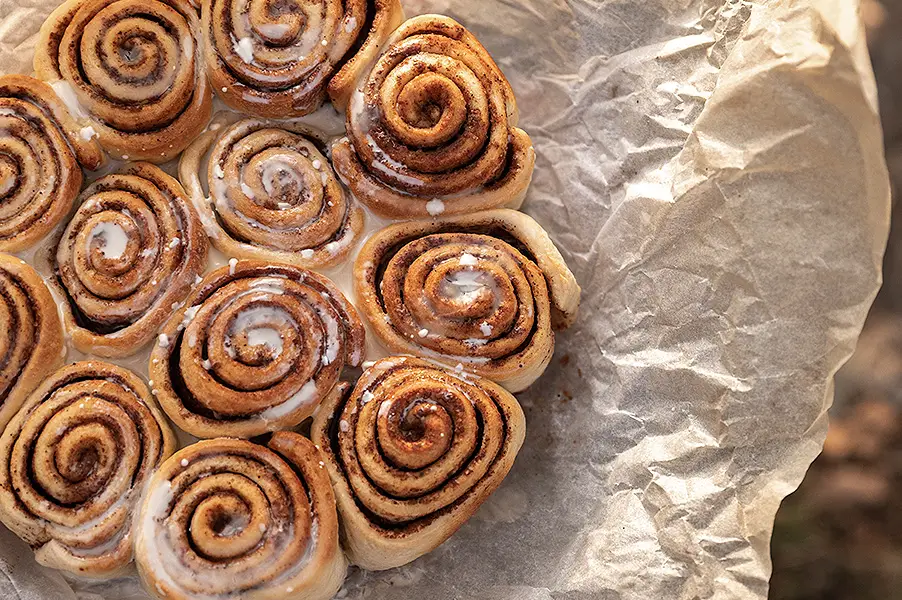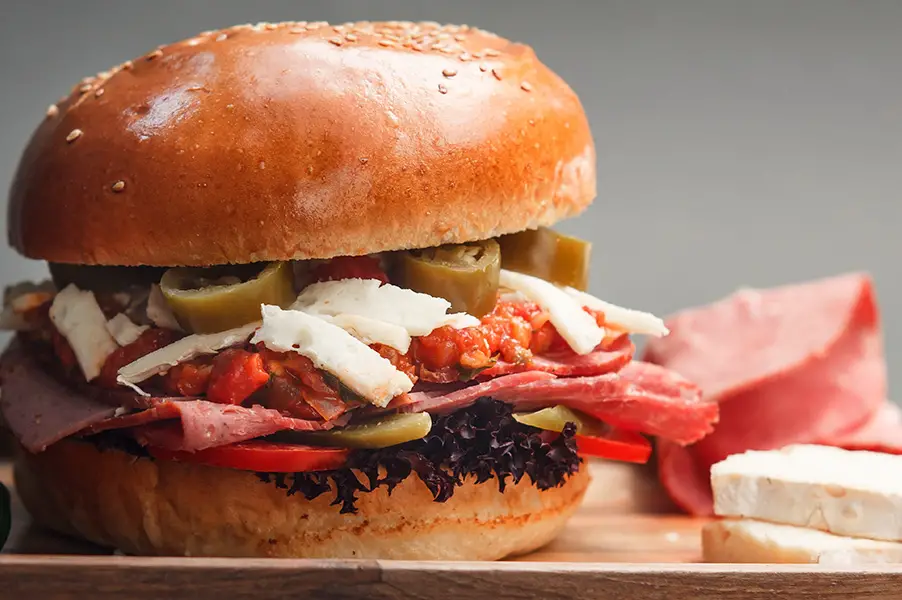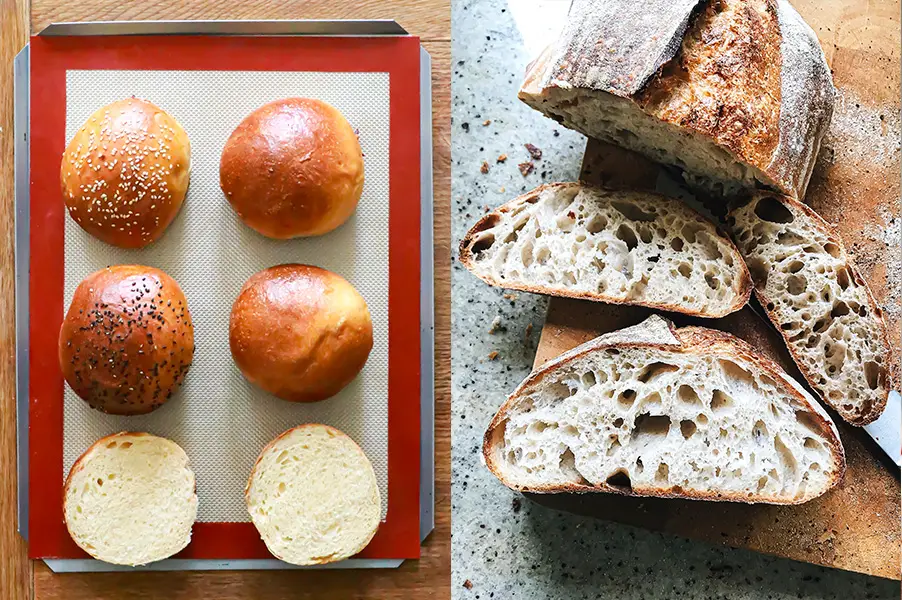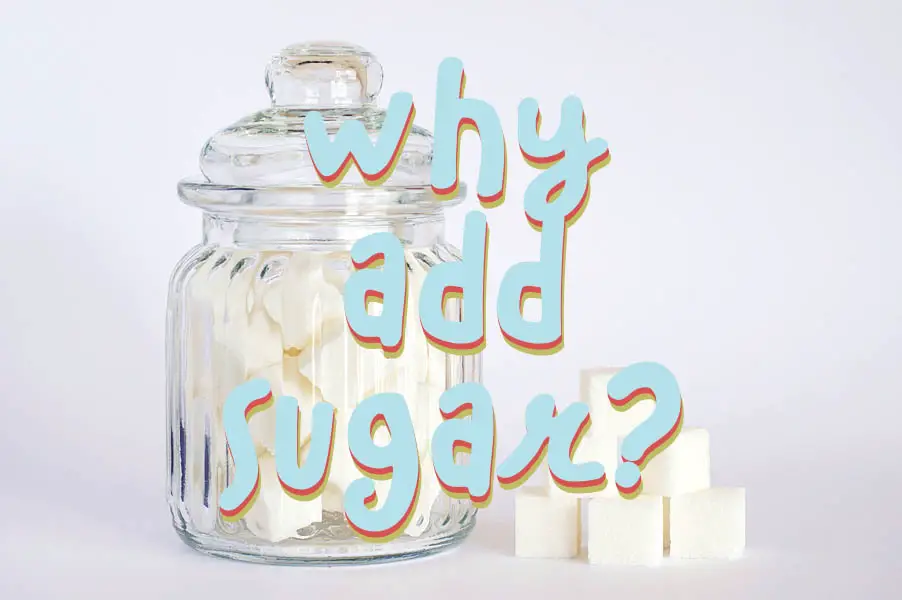This is a pretty common question, one that is ever-pressing in the western world. After all, sugar is added to nearly everything found in supermarkets, and health-conscious individuals these days are often looking for ways to remove simple sugars from their diets. Making things from scratch, at least for us in the west, is just about the only way to know what is really added to our food. I know that was part of our story as we ventured into making bread at home. We wanted to simplify the ingredients in the foods we were eating, and fell in love with how simple scratch bread was. At the core, bread has just 4 ingredients: flour, water, salt, and yeast.
So then, you are likely asking, why is sugar found in so many bread recipes?
There are four primary reasons sugar is added to both unsweet and sweet bread: it enhances flavor, it is a hygroscopic agent that helps retain moisture, it is a browning agent, and it enhances the texture of the crumb.
Let’s explore each of these further. Whether you’re looking to remove sugar from your bread recipe or you’re just curious, we think we’ll have you covered!
Sugar Enhances Flavor

There are two primary ways to enhance flavor in the baking world: time and ingredients.
- TIME: Even though homemade bread seems to take an eternity to many of us modern-day bakers (I mean come one, an email travels to the other side of the world in a fraction of a second), most recipes using commercial yeast are actually fairly quick in the history of bread making.
Old-world rustic leavened loaves took days to make before the advent of commercial yeast. A common practice was to mix water, flour, and salt together in a bowl and leave it out for 24-36 hours. Maybe even longer. The dough would attract natural yeast from around the home and begin to leaven the dough. With all of that time sitting out, countless reactions were taking place in the dough, creating loads of flavor.
This is fairly similar to real sourdough recipes of today. If you’ve ever looked into it, you might have noticed that sugar isn’t very common in sourdough recipes. There are more reasons to that, but a primary reason is that with the added time sourdough takes, it doesn’t really need a lot of ingredients to add flavor. - INGREDIENTS: With many yeasted dough recipes taking just a few hours, it really benefits from adding flavor via ingredients. Sugar is a great option as it is a cheap and convenient flavor enhancer. It’s simple to use, the flavor is loved by most humans, shelf-stable for ages, and doesn’t require any prep ahead of time.
But, sugar actually does do some pretty specific things for flavor profiles in bread. It doesn’t just add flavor, it changes the flavor. We’ve experimented with yeasted bread enough to know that bread without things like salt and added sugar can turn out pretty bitter. Something like warm beer. And that has to do with the way yeast works. It’s wonderful, don’t get me wrong, but it needs to be kept in check. It’s a potent bit of biology and needs things like salt to slow it down (look at me adding useful information about salt that you didn’t even ask for) and sugar to keep yeast from producing too much ethanol (alcohol) while it raises your dough. Too much ethanal equals bitter bread.
Sugar also adds flavor during baking. The crust of bread turns brown due to protein reacting to heat, causing the protein strands to change structure. This reaction is known in the baking world as the Maillard reaction. But it doesn’t just add color, it alters the flavor of the crust. If enough sugar is present in the dough, then the Maillard reaction will fuse together with the caramelization of the sugar, producing a more complex flavor.
The short of it all friends is sugar is almost always added to bread for flavor. It’s the number one reason. It just so happens, that sugar does other things well for bread along with the flavor help. Which is the real reason it is added so often. It’s the combination of things that make it useful for baking.
Sugar is a Hygroscopic Agent

Hygroscopic is a fancy word I mainly use to impress you. Did it work? Just kidding. It’s the most precise way to describe what is actually happening for bread purposes. Substances that are hygroscopic absorb water from their environment. This means that sugar will help pull moisture out of the air around your dough/bread keeping your finished loaf more moist.
And that moisture isn’t just for taste/preference. It actually helps keep the finished loaf from going stale for a longer period of time. Without added preservatives, you might have noticed homemade bread goes stale very quickly. But don’t think of stale bread as simply drying out. The way sugar/water retention keeps the bread from going stale is by disrupting the natural crystalization process of starch in bread. Having water stored and spread throughout bread disrupts the starch or rather separates it from aligning. The crystalization will happen no matter how much moisture you can trap in, but starting with a healthy amount of trapped moisture gives you more time.
Think of it this way, sugar/water retention makes the starch work harder to form its hard structure we consider to be “stale”.
Sugar is a Browning Agent

This might not seem like a big deal, but if you’ve ever made a palish-gray loaf of bread you know how big a deal it is. Gray bread just doesn’t look appealing, nor does it taste as good as a beautifully browned loaf. I’ve heard it said that we eat with our eyes first. Or rather, that presentation can actually enhance flavor. The human brain is quite complex, friends.
But, psychology aside, browning bread as mentioned above actually enhances the flavor of bread too. The browning caused by sugar is known as caramelization. It is a transformation that takes a pretty simple flavor profile like sugar and creates a complex profile. When combined with the Maillard reaction and flavor profiles produced by yeast, sugar molds it all together in a perfect pairing. Well, that is, once you add butter. Nothing beats a buttered roll!
Sugar Enhances The Crumb’s Texture

If you’ve been around the bread world for a minute, you’ve heard the term crumb. If you’re not sure what that is yet, it simply refers to the inside of the bread. The part you slap on the butter and jelly. Aka, everything that isn’t the crust. 🙂
To say that sugar improves the texture of the bread crumb actually comes down to how the bread will be used. Sandwich bread is often used for, well, sandwiches. Dinner rolls are often used with butter and gravy. So the texture of the crumb needs to be a bit tight to stand up to those toppings. And sugar does a good job of “tightening” the crumb. Which has to do with what sugar does to the dough.
Sugar causes gluten structures to tighten/strengthen. This means that dough with sugar will be less “stretchy” and therefore once baked up, have a tighter crumb. Or rather, have fewer holes making them able to stand up to sauce (read “sauce” with a southern accent as I’m clearly referring to barbecue). In general, people don’t want butter, jelly, or barbeque anything falling through holes in their sandwiches onto their hands. And who wants a soggy floppy roll that dissolves in gravy? I know I don’t! And, most folks seem to agree with this, as most of the top-rated recipes for dinner/sandwich bread include steps that produce tighter crumbs (added sugar, degassing before rolling, using a tin pan to compress the rise, etc).
As noted above, this is another reason why many sourdough recipes don’t include sugar. Especially the light and airy rustic loaves full of holes that modern bread pioneers like Robertson (see his book here) and Forkish (see his book here) have inspired. Links take you to Amazon, and for transparency purposes, if you choose to purchase anything from any links on our website we will be awarded a small advertising fee at no extra cost to you (it’s how we keep this blog online).
But do I Have to Add Sugar to Bread?
No, you do not have to add sugar to a bread recipe. Or rather, you can ommit sugar from a bread recipe. In fact, for most sandwich recipes, especially those that include moisturizing agents like fats (oil, butter) removing sugar will likely go unnoticed by most. This is especially true for moisture, but also likely for flavor as well. Maybe some will notice, but I doubt many will. For dinner rolls I tend to notice if added sugar is absent, but still, find both versions delicious. Just be sure to give your loaf or rolls a butter wash or egg/milk wash if you prefer the look/taste of browned bread.
The bottom line is, sugar is mostly about flavor. Test out your recipes and see what you like more. Just consider the recipe when you do, because obviously cinnamon rolls will be a lot different if you remove all of the sugar. On the other hand a simple hamburger bun is likely going to be pretty similar with or without sugar added.
But, Doesn’t Yeast Need Sugar To Help it do Its Job?
Yes, yeast needs sugar. But there is enough sugar present in wheat flour to produce the growth needed. Your dough might be a bit slower out of the gates without sugar, but I find that my dough with or without sugar tends to finish rising at the same time. The caveat being that I didn’t add too much sugar (keeping nonsweet bread under 10% of your flour is typical for most recipes and a great target). Even though sugar can speed up the initial rise of dough, it also can slow things down by depriving yeast of water. Remember that sugar is hygroscopic, and one reason why I think that dough without sugar will eventually catch up to dough with sugar (along with sugar causing tighter gluten strands).

